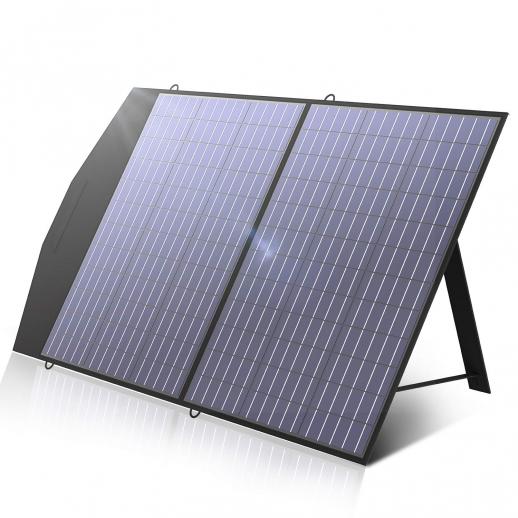How Much Does A Single Solar Panel Cost?
The cost of a single solar panel is a common query among homeowners and businesses considering the switch to solar energy. Understanding the financial aspects of solar panels is crucial for making an informed decision. In this article, we will delve into the various factors that influence the cost of a single solar panel, the average price range, and additional expenses that may arise during the installation process. By the end of this article, you will have a comprehensive understanding of the costs associated with purchasing and installing a single solar panel.

Factors Influencing the Cost of a Single Solar Panel
Several factors can affect the cost of a single solar panel. These include:
1. Type of Solar Panel: There are primarily three types of solar panels—monocrystalline, polycrystalline, and thin-film. Monocrystalline panels are the most efficient and expensive, while polycrystalline panels are slightly less efficient and cheaper. Thin-film panels are the least efficient but are also the least expensive.
2. Wattage: The power output of a solar panel, measured in watts, directly impacts its cost. Higher wattage panels produce more electricity and are generally more expensive.
3. Brand and Manufacturer: The brand and manufacturer of the solar panel can also influence the price. Well-known brands with a reputation for quality and reliability tend to charge more for their products.
4. Efficiency: The efficiency of a solar panel refers to the percentage of sunlight it can convert into usable electricity. Higher efficiency panels are more expensive but can generate more power in a smaller space.
5. Market Conditions: The cost of raw materials, tariffs, and supply chain issues can all impact the price of solar panels. Market conditions can cause prices to fluctuate over time.
Average Cost of a Single Solar Panel
As of 2023, the average cost of a single solar panel ranges from $200 to $350. This price range typically applies to panels with a wattage between 250 and 400 watts. Here is a breakdown of the average costs based on the type of solar panel:
- Monocrystalline Panels: $250 to $350 per panel
- Polycrystalline Panels: $200 to $300 per panel
- Thin-Film Panels: $150 to $250 per panel
It's important to note that these prices are for the panels alone and do not include additional costs such as installation, inverters, or mounting hardware.
Additional Costs to Consider
When budgeting for solar panels, it's essential to consider additional costs beyond the price of the panels themselves. These additional expenses can include:
1. Installation Costs: Professional installation is recommended for solar panels to ensure they are correctly and safely installed. Installation costs can vary widely depending on the complexity of the installation and the labor rates in your area. On average, installation costs range from $3,000 to $7,000 for a residential solar panel system.
2. Inverters: Inverters are necessary to convert the direct current (DC) electricity generated by solar panels into alternating current (AC) electricity used by most household appliances. The cost of inverters can range from $1,000 to $2,000.
3. Mounting Hardware: Mounting hardware is required to secure the solar panels to your roof or ground. The cost of mounting hardware can range from $500 to $1,000.
4. Permits and Inspections: Local regulations may require permits and inspections for solar panel installations. Permit fees can range from $100 to $500, and inspection fees can add another $100 to $300.
5. Maintenance and Repairs: While solar panels are generally low-maintenance, occasional cleaning and repairs may be necessary. Budgeting for maintenance and repairs can help ensure the longevity and efficiency of your solar panel system.
Financial Incentives and Savings
One of the significant advantages of investing in solar panels is the potential for financial incentives and long-term savings. Several incentives can help offset the initial cost of solar panels, including:
1. Federal Tax Credit: The federal government offers a tax credit for solar panel installations, known as the Investment Tax Credit (ITC). As of 2023, the ITC allows homeowners to deduct 26% of the cost of installing a solar energy system from their federal taxes.
2. State and Local Incentives: Many states and local governments offer additional incentives, such as rebates, tax credits, and grants, to encourage the adoption of solar energy. These incentives can vary widely by location.
3. Net Metering: Net metering programs allow homeowners to sell excess electricity generated by their solar panels back to the grid. This can result in credits on your utility bill and further reduce your overall energy costs.
4. Energy Savings: By generating your electricity, you can significantly reduce or even eliminate your monthly utility bills. Over time, the savings on energy costs can help offset the initial investment in solar panels.
The cost of a single solar panel can vary based on several factors, including the type of panel, wattage, brand, and market conditions. On average, you can expect to pay between $200 and $350 for a single solar panel. However, it's essential to consider additional costs such as installation, inverters, mounting hardware, permits, and maintenance when budgeting for a solar panel system.
Despite the initial investment, solar panels offer significant long-term savings and financial incentives. Federal and state incentives, net metering programs, and reduced energy costs can all contribute to making solar energy a financially viable option for many homeowners and businesses.
By understanding the costs and benefits associated with solar panels, you can make an informed decision about whether solar energy is the right choice for you. Investing in solar panels not only helps reduce your carbon footprint but also provides a sustainable and cost-effective energy solution for the future.
